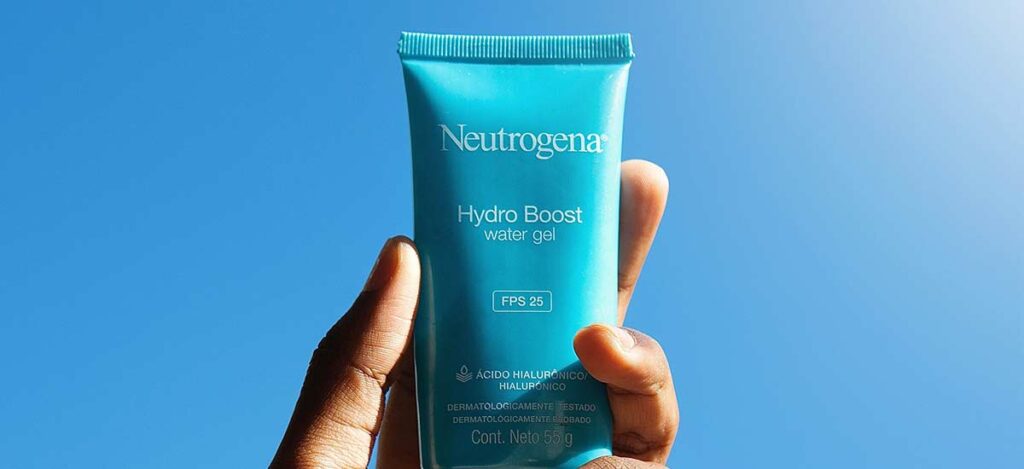Sunscreen lis an essential part of any skincare routine, and it’s important to choose the right sunscreen lotion for your specific needs. However, with so many options available, figuring out how to choose the best sunscreen can be a daunting task.
There are a few key factors to consider when choosing the best sunscreen for you. These factors may include the sensitivity of your skin, how long you will be in the sun, which body part you are applying it to, the activity you may be doing, and your skin type. Let’s dive in and learn about all of these factors.
Sunscreen Lotion Basics
What are UVA and UVB Rays?
Picking the right sunscreen lotion starts with understanding the difference between UVA and UVB rays.
UV stands for ultraviolet. These rays have shorter wavelengths so your eyes can’t see them, but, the energy in these rays can affect your skin. UVA, or Ultraviolet A, rays are associated with skin aging. While UVB, Ultraviolet B, rays are associated with skin cancer.
Did you know? One in five Americans will develop skin cancer before the age of 70.
National Institutes of Health
According to the FDA, not all sunscreens have been shown to protect against skin cancer. When they are talking about this statement they are talking about the difference between UVA and UVB protection. This is why it is important to look for a sunscreen that is labeled as broad spectrum. This means the product you are choosing protects against both UVA and UVB rays.
Can Sunscreen Prevent Tanning?
Yes, the whole point of sunscreen lotion is to prevent your skin from tanning. A tan is the result of UV rays causing a chemical reaction in your skin to produce something called melanin. Melanin absorbs the UV rays.
When there are more UV rays than can be absorbed by the melanin, that is when you get a sunburn.
If the UV rays are blocked, melanin will not be produced and thus, no tan.
Sunscreen & SPF
The second factor to take into consideration when choosing sunscreen lotion is the sun protection factor (SPF). SPF measures how effective the lotion is at blocking the sun’s UV rays.
The SPF rating indicates the theoretical amount of time you can be exposed to the sun’s UV rays before getting sunburned, compared to how long it would take without any sunscreen. So, for example, if you’re using an SPF 50 sunscreen as the label directs, it should take you 50 times longer to sunburn than it would if your skin were unprotected.
The American Academy of Dermatology recommends using at least SPF 30. 30 will block 97% of UVBs rays. A higher SPF will block slightly more UVB rays, but no sunscreen will block 100%.
A survey in 2023 found that 11% of people don’t wear any sunscreen lotion at all, and a mere 13.5% wear sunscreen daily.
National Institutes of Health
Sunscreen: Mineral vs Chemical
Minerals are natural elements or compounds with a crystal structure like quartz or gold. Minerals that are found in sunblock are usually zinc oxide or titanium oxide. These minerals when found in sunblock, sit on top of your skin and reflect the light away, UV rays are unable to penetrate your skin.
Sunscreens that are chemical in nature absorb into the skin in order to work. They are quicker and easier to apply and do not leave a film on your skin. Common ingredients in chemical sunscreens include avobenzone, oxybenzone, octisalate, octocrylene, homosalate, and octinoxate.
Can Sunscreen Lotion Expire?
Yes, eventually sunscreen does expire. Each bottle should have an expiration date. You can still use it after the expiration date, but, it may begin to loose some effectiveness.
The FDA requires that all sunscreens retain their original strength for at least three years.
Once the lotion and the oils start to separate and break down, it is definitely time to throw that bottle away and buy a new one.
Activities & Sunscreen
What you are doing and how long you will be in the sun should be another important factor in choosing your sunscreen lotion. Different activities can expose your skin to the sun’s rays in varying intensities, and some may involve elements like water or sweat, like a day at the beach. These elements can affect how well your sunscreen holds up. Here’s how to choose a sunscreen based on common activities:
- For Daily Use – Due to how often you will apply the lotion, choose a lightweight, moisturizing, non-comedogenic formula that is at least SPF 30.
- For Water Activities – Opt for a water-resistant higher SPF. Reapply according to the product’s instructions after swimming or sweating.
- For Sports and High-intensity Activities (Running, Hiking, Cycling) – Look for SPF of or higher with sport or active formulas designed to bond better to the skin during intense activity. Gel formulations can be a good option as they’re less likely to drip into your eyes.
- Snow Sports (Skiing, Snowboarding) – Snow sports can be particularly dangerous in the sun because the sun’s rays reflect off of the snow, which increases your exposure. SPF of 50 or higher is a good idea, and, look for a wind and cold resistant formula.
Tips for All Activities
- Reapplication: No matter the activity, reapply at least every two hours, and immediately after swimming, sweating, or towel drying.
- Broad Spectrum: Always opt for broad spectrum sunscreen lotions.
- Sensitive Areas: Use a stick sunscreen for targeted application on sensitive areas like the face and around the eyes.
Sunscreen vs Sunblock
Sunscreen lotion and sunblock are in fact two different things. Sunblock is designed to physically block or reflect the sun’s rays. Sunblock sits on the top of your skin, it does not absorb into it. It contains inorganic compounds like zinc oxide or titanium dioxide which are thicker than sunscreen and may leave a visible white residue on the skin.
66.5% of people feel that schools should educate children about the importance of using sunscreen.
National Institutes of Health
Sunscreen, on the other hand, is made of chemicals that absorb UV radiation and convert it into heat. The heat is then released from the skin. Sunscreen is easily absorbed by the skin. It has a much thinner consistency compared to sunblock.
What are The Most Popular Suncreen Lotions?
As the global sunscreen market in 2019 was a whopping 8.5 billion U.S. dollars. In 2024 this number is predicted to be 10.7 billion U.S dollars. This number is expected to increase to 13.6 billion U.S. dollars in 2028.
As the market grows, popular sunscreens need to not only offer broad-spectrum protection but also cater to specific concerns such as aging, hydration, and acne-prone skin. Here are some popular sunscreens based on recent 2023 US sales data:
- Banana Boat suntan lotions and oils amounted to over 281 million U.S. dollars.
- Neutrogena was another high earning brand, with sales adding up to nearly 320 million U.S. dollars.
Banana Boat’s popularity is also cemented by a 2023 survey which found that 40% of U.S. consumers stated that Banana Boat was their preferred sunscreen brand. 21% said the same about the brand Hawaiian Tropic.
In 2023, the price per unit of the leading suntan lotion and oil brand Banana Boat added up to around $9.07. That year, La Roche-Posay was the most expensive brand with a price per unit amounting to over $30.
Statista
What Is The Best Sunscreen For The Face?
When it comes to choosing the best sunscreen lotion for your face, there are a few key points to consider beyond the normal factors.
Look for labels that say “non-comedogenic,” meaning the product is formulated not to clog pores. And, look for hydrating ingredients, like hyaluronic acid or glycerin.
You will want to avoid lotions with parabens, fragrances and oils.
EltaMD UV Clear Broad-Spectrum SPF 46 is a favorite among dermatologists for sensitive and acne-prone skin, offering lightweight, residue-free protection.
You may also be able to find tinted or weightless sunscreens that may feel better than normal sunscreens on your face.
What Is The Best Sunscreen For Sensitive Skin?
Some people have skin that is more sensitive than others, making them more susceptible to irritation when using certain lotions. Certain ingredients in chemical sunscreen, may cause an allergic reaction known as a contact allergy.
So, use a mineral based sunblock, or, opt for sunscreens that are labeled as “hypoallergenic” or “fragrance-free”. Popular choices might include:
EltaMD UV Clear Facial Sunscreen Broad-Spectrum SPF 46: Specifically formulated for sensitive skin types, including those with rosacea and hyperpigmentation. It’s lightweight and contains niacinamide.
CeraVe Hydrating Mineral Sunscreen SPF 50: A mineral sunscreen that includes ceramides and hyaluronic acid to hydrate and restore the skin’s natural barrier.
Signs that you may have a sunscreen allergy include redness, itching, and even burning and swelling of your skin. There are two types of reactions. You may have a reaction wherever you apply the sunscreen lotion. Or, it is possible you might not have a reaction until you apply the lotion and then expose your skin to UV rays. This is known as a contact photoallergy.
Which Sunscreens Are Reef Safe?
Reef-safe sunscreen is actually sunblock, not sunscreen. The ingredients in sunblock such as zinc are more safe for marine life. Popular options may include:
Thinksport Safe Sunscreen SPF 50+: A reef-safe, water-resistant sunscreen that’s free of biologically harmful chemicals. Suitable for sensitive skin.
Blue Lizard Sensitive Mineral Sunscreen SPF 30+: Free from chemicals that can harm coral reefs, this sunscreen is designed for sensitive skin and offers good protection without the environmental impact.
Many brands committed to environmental stewardship will also highlight their use of non-nano zinc oxide and titanium dioxide, which are less likely to be ingested by coral than nano-sized particles.
Chemical sunscreen lotions contain chemicals that are known to contribute to coral bleaching.
Sunscreen For Dogs
Just like humans, dogs can suffer from sunburn and the long-term effects of sun damage. Areas of their body with less fur, such as the nose, ears, and belly are most at risk. To protect your furry friend, it’s essential to use a sunscreen that is safe for them.
Look for sunscreens that are specifically formulated for pets and that are fragrance free and non toxic, in case they lick it off. Some ingredients that are toxic to dogs if ingested, such as zinc oxide and para-aminobenzoic acid (PABA).
Sites like Chrewy.com will have a sunscreen to protect your pooch.
Sunscreen Pill
There are pills available that claim to “prepare the skin for intense sun exposure”. However, there is no truth to the claim that it will help protect your skin from sunburn. In fact, the FDA ordered companies claiming as such that they needed to remove the claim from their advertising.
Final Thoughts
Ultimately, by taking all these factors into consideration you should be able to determine which type of sunscreen will offer you the best protection against UVA/UVB rays while nourishing your skin at the same time!
Remember…..Apply 15 minutes before you go outside. This allows the sunscreen (of SPF 15 or higher) to have enough time to provide the maximum benefit.
Book Your Seaside Heights Vacation Rental Today
Don't wait! All the best rentals book fast. We have you covered Seaside Heights has hundreds of rental options.
Paid Link
Explore Beach Vacation Rentals




